Community and Society
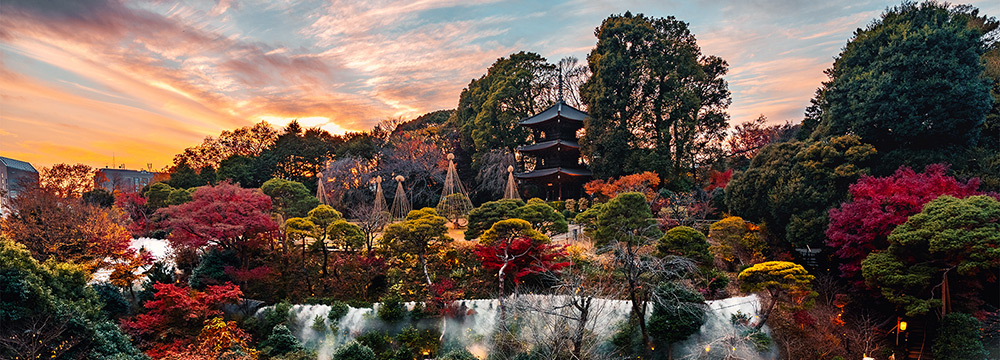
Basic Policy
We are aware of our role in and responsibility to society. As a good corporate citizen, we make effective use of our management resources to contribute to creating a prosperous society through activities that contribute to local communities and to society.
Initiatives
- Activities rooted in the local community
-
We carry out educational activities, such as work experience opportunities for students. We also support and participate in local events and cleanups.
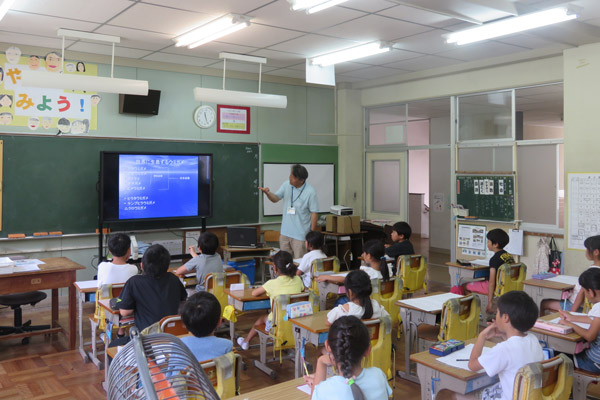
-
Environment education
The staff of Shimoda Aquarium visit and teach at preschools and elementary and junior high schools in Shizuoka and other prefectures. Through these visits, our staff contribute to teaching people about marine life ecology, raising their interest in protecting ocean habitats, and keeping the oceans clean.
Support for the Japan Service Dog Association
We have supported the growth and use of service dogs since 2010.
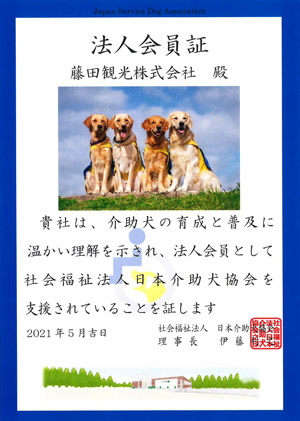

Volunteer activities
In order to increase awareness on various social issues and support employees that contribute to society, the Group has established a system where employees can take leaves of absence to perform volunteer activities. All of our establishments conduct local cleanups. The Shimoda Aquarium organizes cleanups that local residents can participate in, including cleanups of beaches where loggerhead sea turtles lay their eggs.
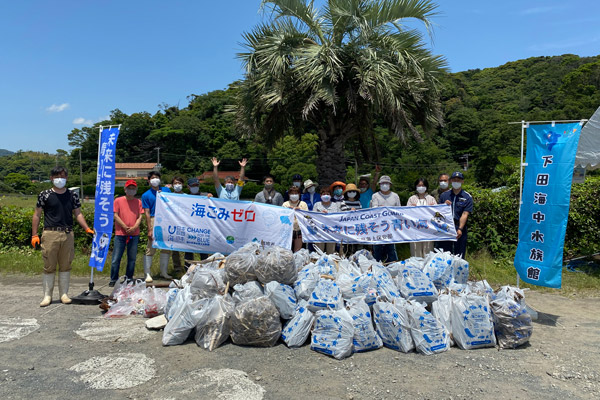
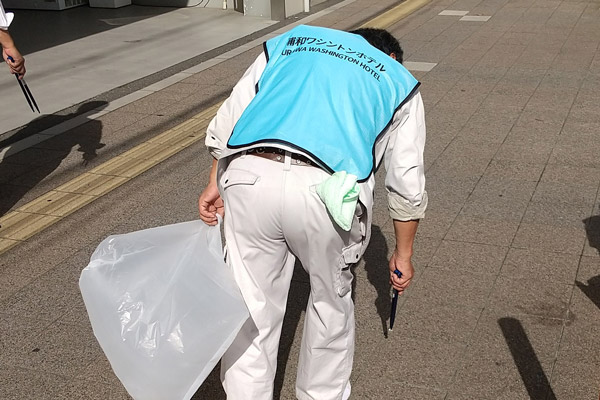
Our head office in Bunkyo City, Tokyo, hosts a traveling sale of bread made by centers for disabled workers every month. By buying bread, we help increase the employment of people with disabilities and their participation in society. The Hiroshima Washington Hotel offers papers cranes folded by the staff each year on the days of the atomic bombings. We also hold various other volunteer activities from our establishments.
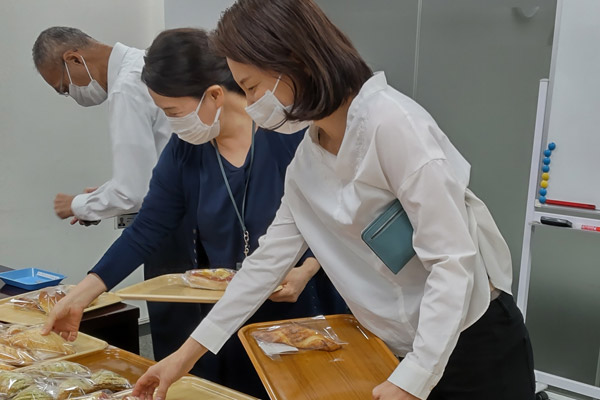
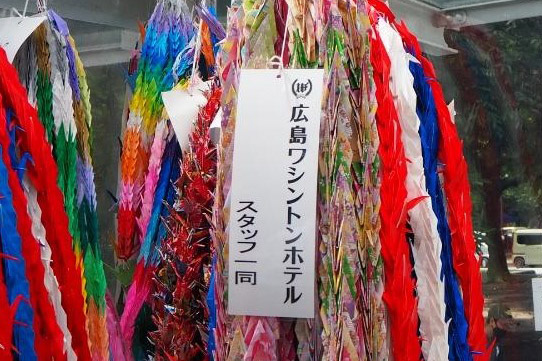
- Concept rooms with the atmosphere of different areas
-
We provide concept rooms that are designed to let you get a sense of the culture, atmosphere, and very essence of the locality.
Sendai Washington Hotel
Date Modern: Inspired by Miyagi during the time of Date Masamune
Rias: Inspired by the coastline of Miyagi, which was created by gods after a long cycle of destruction and regeneration
Keyaki: Features furniture and items representing Miyagi's traditions and culture
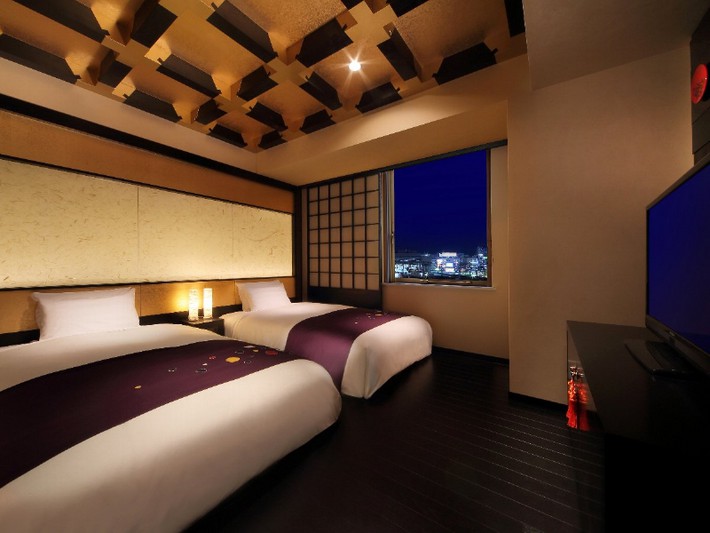
Miyagi Room (Twin/Date Modern)
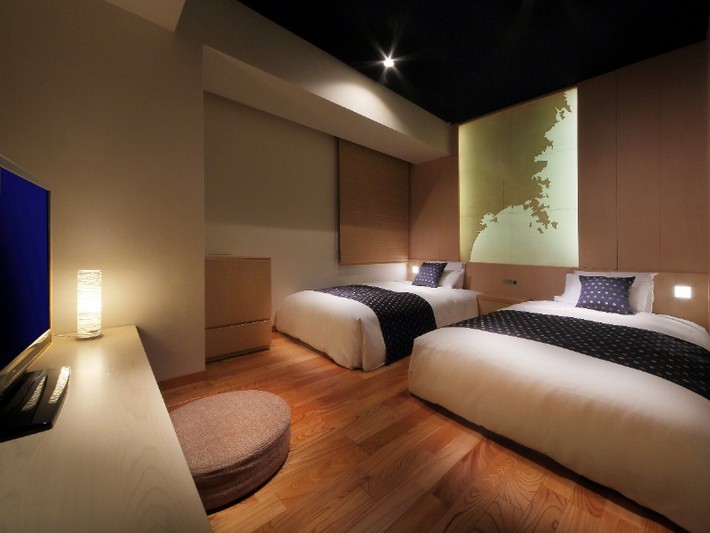
Miyagi Room (Twin/Rias)
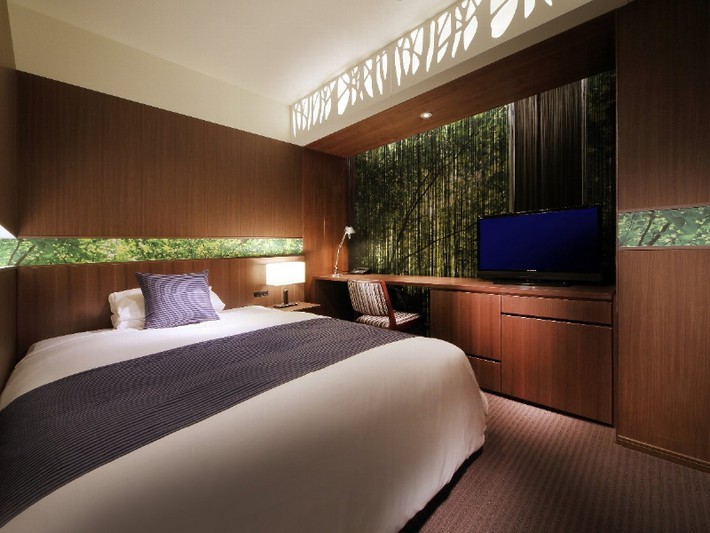
Miyagi Room (Single/Keyaki)
Hiroshima Washington Hotel
Hiroshima Room Twin A: A special room part of a collaboration with P3 HIROSHIMA, three professional organizations in Hiroshima
Hiroshima Room Twin B: A Hiroshima fusion room that combines the traditions represented by Miyajima and Takehara, where humans and gods co-exist, with the elegance of the serene Seto Inland Sea, creating a cozy, Japanese-style atmosphere
Hiroshima Room Single: Includes furniture made with wood from Hiroshima and a carpet modeled after Hiroshima's land. We did our best to procure all of the furniture and items from Hiroshima
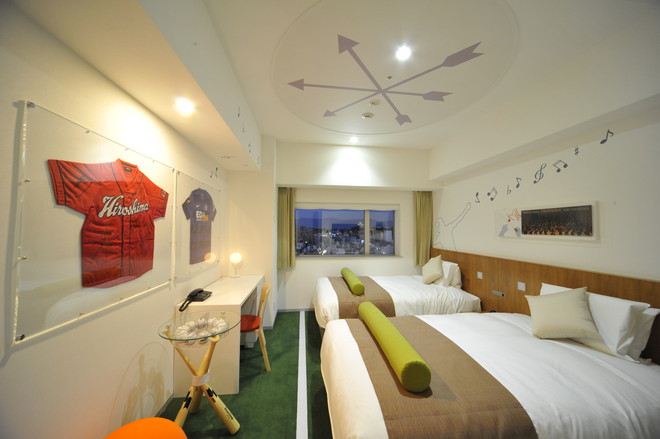
Hiroshima Room (Twin A)
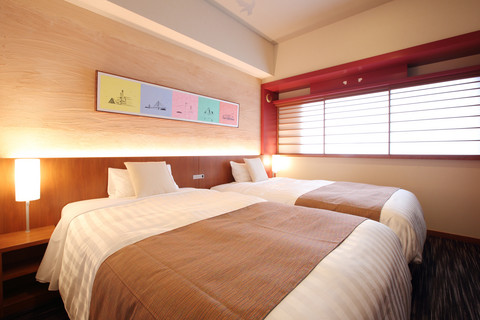
Hiroshima Room (Twin B)
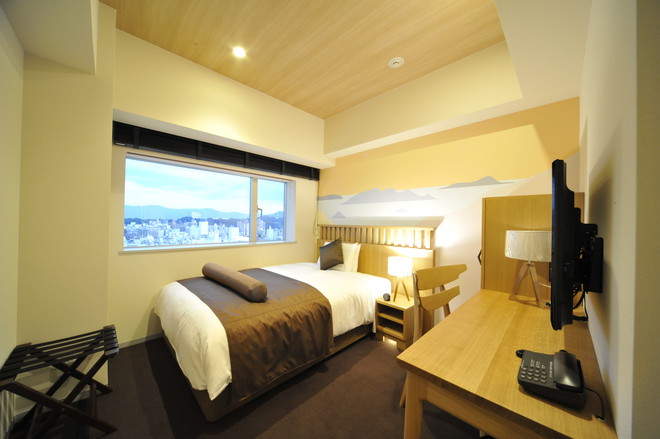
Hiroshima Room (Single)
-

Churaumi Room (Double)
-
Hotel Gracery Naha
Churaumi Room: A concept room that lets you feel like you are actually swimming in Okinawa's churaumi (means "beautiful sea" in the Okinawan dialect) from the comfort of your room
-
- Preserving cultural assets and historical architecture
-
Since the time of our founding, we have owned many valuable cultural assets and historical architecture. As part of our SDGs, we are working to preserve them for future generations.
-
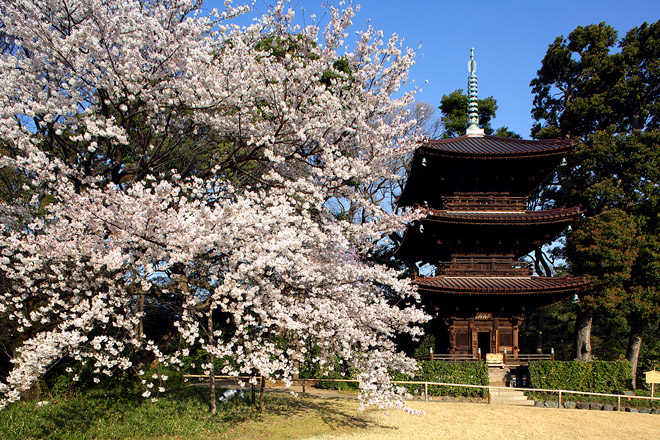
The three-story pagoda, a registered Tangible Cultural Property
-
Hotel Chinzanso Tokyo
The property was named Chinzanso by Aritomo Yamagata in 1878, and after a turbulent 140 years, the garden continues to deeply move visitors with its verdant beauty and magnificent form. Inside the garden are various historical architecture, such as the three-story pagoda—which is said to have been built during the Muromachi period—and the Zangetsu teahouse, both of which are Tangible Cultural Properties. Other historical artifacts include the Hannyaji Temple Stone Lantern and Rakan stone statues from the drawings of Ito Jakuchu. The cultural properties went through three years of maintenance starting in 2009.
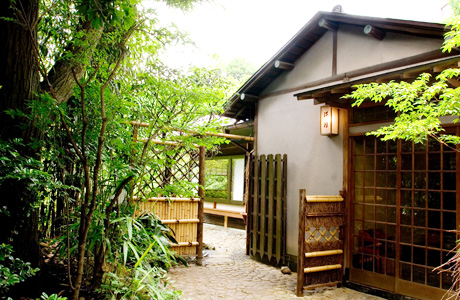
Zangetsu, a registered Tangible Cultural Property

Rakan stone statue from drawings of Ito Jakuchu
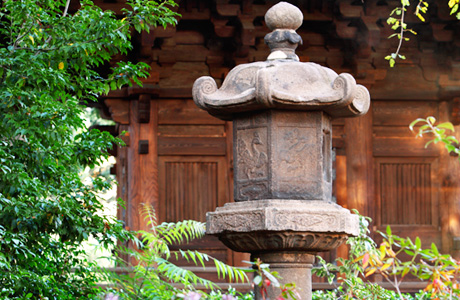
Hannyaji Temple Stone Lantern
-
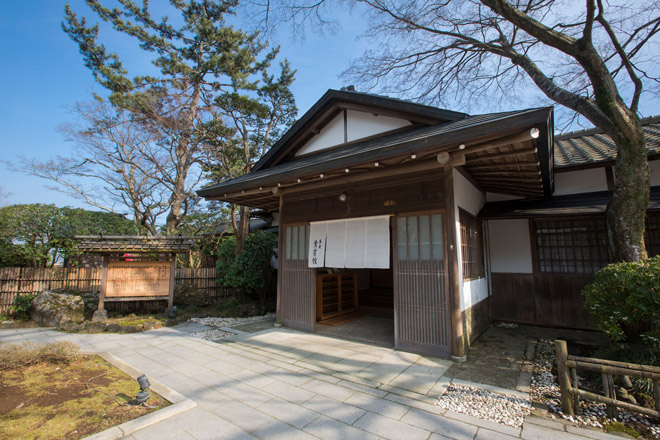
Kihinkan, a registered Tangible Cultural Property
-
Hakone Kowakien Kihinkan
The Kihinkan is a sukiya-zukuri style house built in 1918 as a secondary home as a secondary home of Heitaro Fujita. The interior decoration is said to have taken three years to complete and was made with the most advanced technology at the time. Heitaro invited a gardener from Kyoto to Hakone to build the spacious Japanese garden. Gazing at it from the living quarters is a pleasant experience. The building currently serves as a soba restaurant.
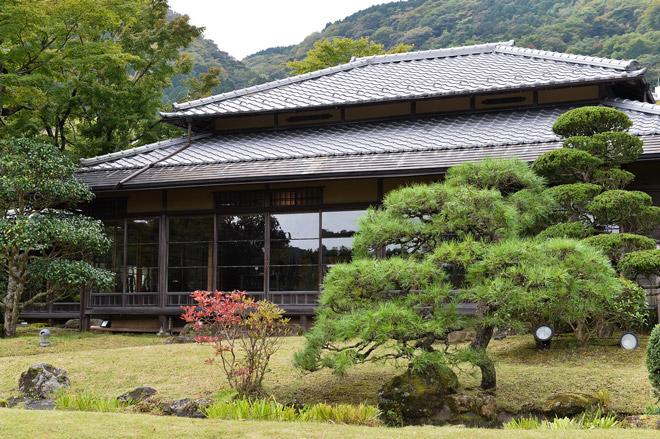
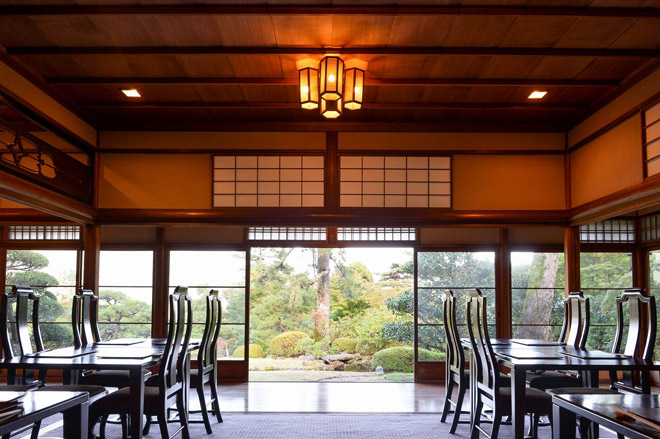
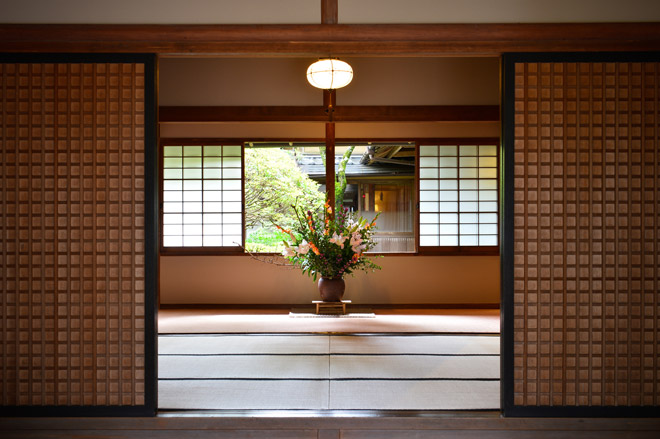
-

Geihinkan, a National Registered Tangible Cultural Property
-
Hakone Kowakien Geihinkan
Geihinkan was a village head's residence built in 1875 by carpenters who specialized in building temples and shrines. The structure is made of pine, chestnut, and other materials, and the roof, of corrugated sheets and iron plates brought from England. The second floor has a large room made for sericulture the size of 60 tatami mats. Its flooring was bamboo to increase ventilation. The building was turned into a teppanyaki and shabushabu restaurant in May 2016, while keeping the original beams and pillars intact. Come and have an unforgettable time in this historical building.
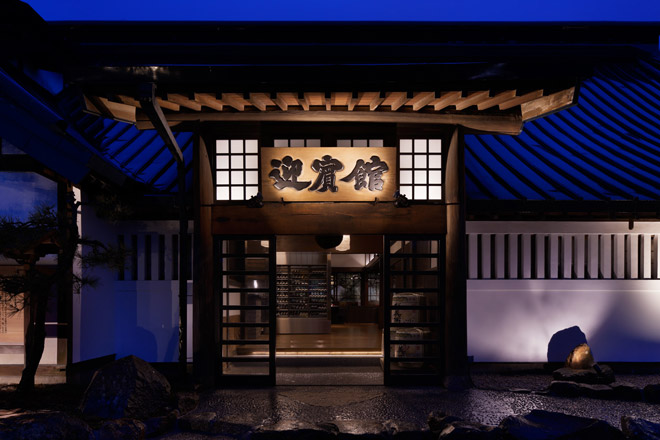
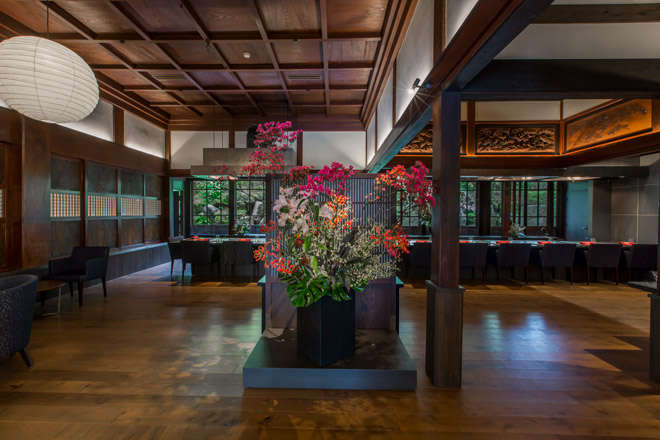
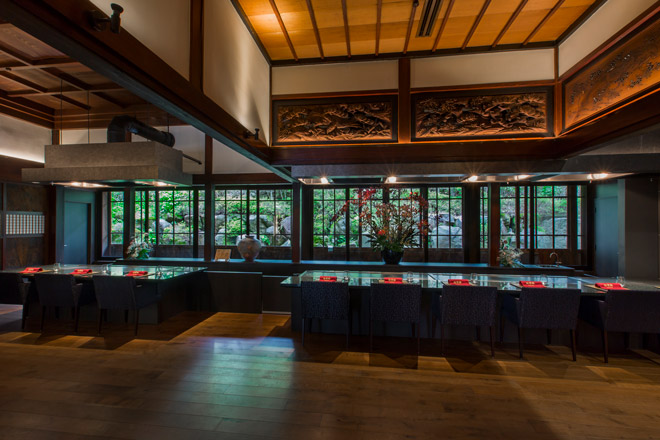
-

Hakone Kowakien Mikawaya Ryokan
-
Mikawaya Ryokan
Ever since it was founded in 1883, the Mikawaya Ryokan has been visited by many writers and artists. The entrance of the main building has a hip-and-gable roof with bow-shaped eaves, and the lounge has a Western-style interior with a stucco ceiling. The guest rooms are organized into squares, while the private baths have aesthetic ceilings resembling paper umbrellas, and a restaurant faces the courtyard. The hallway is lined with windows, and there are other sukiya-style touches throughout the building. Guests can appreciate Japan's traditional decorations. You can also see remnants of the Taisho and Meiji eras, back when the building opened as a hotel for guests from abroad. Come and appreciate this beautiful Japanese architecture that was ahead of its time.

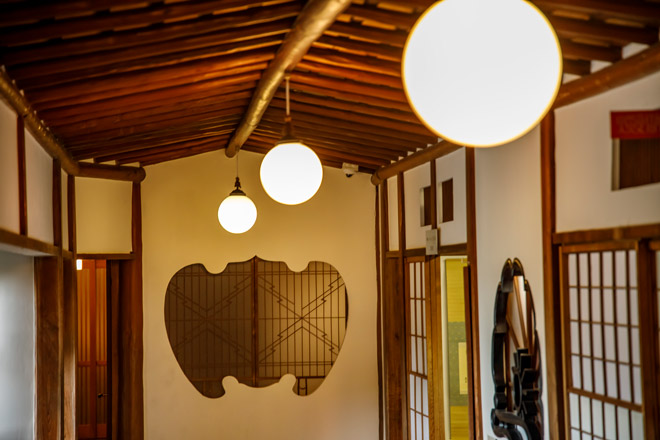
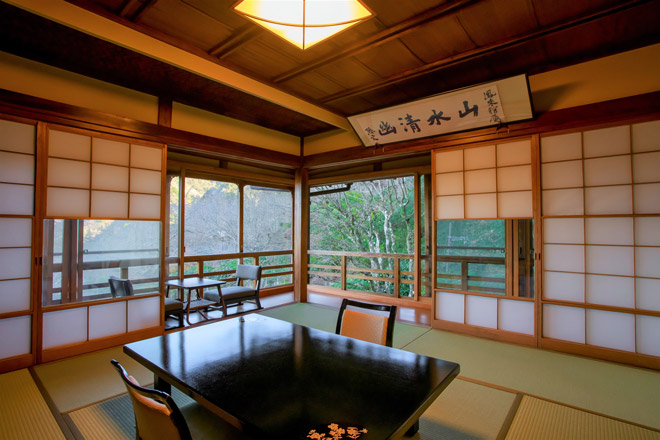
Support for the Fujita Museum
The Fujita Museum was established in 1951 by Denzaburo Fujita—the founder of Fujita—and his two oldest sons, Heitaro and Tokujiro. The museum opened to the public in 1954, featuring a collection of oriental antique art collected since the beginning of the Meiji era and during the Taisho era. Denzaburo and his sons were well versed in antiques and tea ceremonies, and they had collected about 2,000 articles of paintings, calligraphy, ceramics, sculptures, lacquerware, metalwork, dyed textiles, and archaeological artifacts, which are now stored in the museum. Among the articles, 9 are national treasures, and 53 are designated as Important Cultural Properties. Fujita Kanko supports the Fujita Museum by providing funds and PR in order to connect to our roots and preserve these cultural assets.
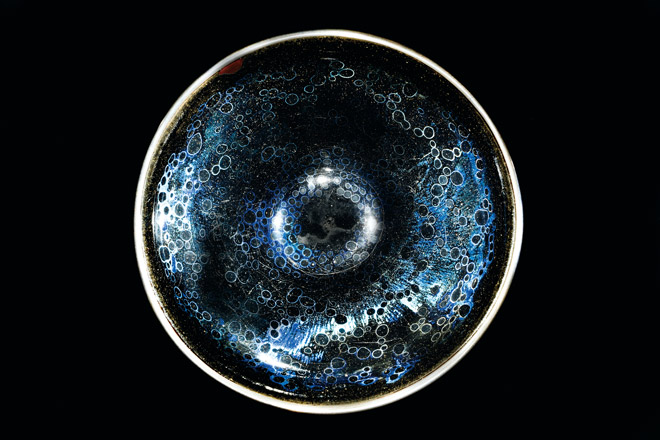
Tea Bowl, Tenmoku glaze with glistening spots (photography: Kazuyoshi Miyoshi)
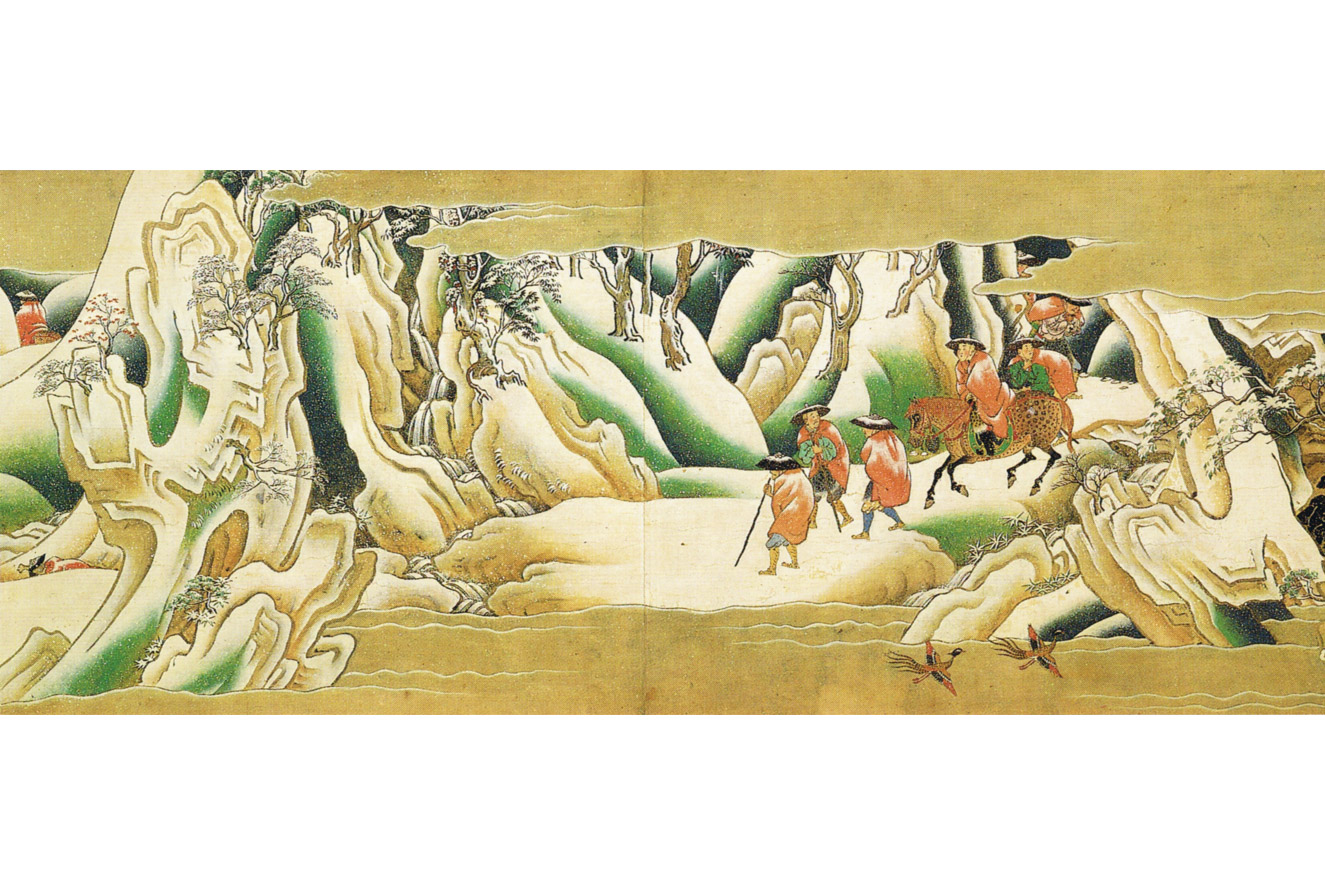
National Treasure, Genjo Sanzo'e
-
- Sustainability
- Policies and systems
- TCFD
- SDGs
Sustainability
- Top Message
- Environmental Conservation
- Customer Safety and Security
- Diversity and Inclusion
- Community and Society
- Compliance with Corporate Ethics
- Policies and systems
- Human Rights Policies
- Basic Policy toward Customer Harassment
- Procurement Policies・
Sustainable procurement
guidelines - Environmental Conservation
Basic Policy - Customer Safety and
Security Basic Policy - Diversity and Inclusion
(Respecting Human Rights)
Basic Policy / Diversity Policy - Community and Society
Basic Policy - Compliance with Corporate
Ethics Basic Policy
TCFD
- Compliance with TCFD
- Disclosure based on TCFD
- The World View Surrounding Our Group due to Climate Change
- Scenario Analysis
SDGs
- Home
- About